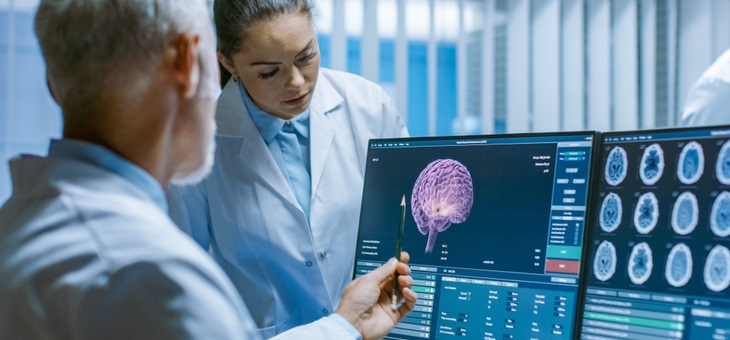For anyone diagnosed with a brain tumour, life is turned upside down. Initial feelings of panic and anxiety will be followed by consultations with medical experts to determine the best course of treatment.
Then there will be the treatment itself and the side effects, plus the constant anxiety.
For suffers of a particular type of brain tumour known as glioblastoma (GBM), the prospects are grim. This fast-growing cancer gives those diagnosed an average of 15 months to live.
Read: ‘Brain fog’ during menopause is real and linked to dementia
Such is its aggressive nature, GBM is classified as ‘grade four’ brain cancer. (Brain cancers are assigned ‘grades’ rather than the ‘stages’ used for other cancers.) Stages are not assigned to glioblastoma tumours because all display characteristics consistent with stage four brain cancer.
There may, however, be hope on the horizon. A new approach to the disease, known as GBM Agile, could revolutionise treatment. Already being trialled in the US and Canada, GBM Agile is set to be launched in Australia thanks to the Cure Brain Cancer Foundation (CBCF). Foundation CEO Lance Kawaguchi says it has spent $8 million to bring the program to Australia.
“This is the biggest thing to happen in Australian brain cancer research ever,” said Mr Kawaguchi. “Now, Australians will have access to treatments that would typically take 10 years to get here. No other charity has been able to do this, so we are quite proud.”
Read: Navigating ‘cancer land’: A guide for the newly diagnosed
Typically, most cancer trials test out a single drug with results after one or two years, but GBM Agile is designed to rapidly progress from one new drug to the next if patients are not responding, giving them the best chance of survival.
This provides vital, potentially life-saving, opportunities for sufferers of GBM. The foundation expects to be able to cover the costs of about 50 patients each year –more if funds are available.
A big advantage of GBM Agile is that it has access to a database known as the Universal Cancer Databank (UCD), which was launched in 2018 largely thanks to the financial support of Australian mining magnate Andrew Forrest. The UCD collates cancer patients data from around the world, providing a greater ability to pinpoint which treatment is right for particular patients.
Read: Take note of these seven possible brain tumour symptoms
GBM Agile could be a godsend for patients such as Jim Shaw, a Victorian father of two whose world was turned upside with his diagnosis just over a year ago. Mr Shaw’s massive brain tumour was discovered after weeks of severe headaches.
The 48-year-old had an operation a year ago, in which all of the tumour that could be find was removed. This was followed by intensive radiation therapy and 10 rounds of chemotherapy.
Mr Shaw is nearing the end of his treatment but a return of the cancer is statistically likely, so he would be keen to be assessed for possible inclusion in the Australian trial. “It would be really exciting for GBM Agile to be opened up,” he said.
If you enjoy our content, don’t keep it to yourself. Share our free eNews with your friends and encourage them to sign up.

